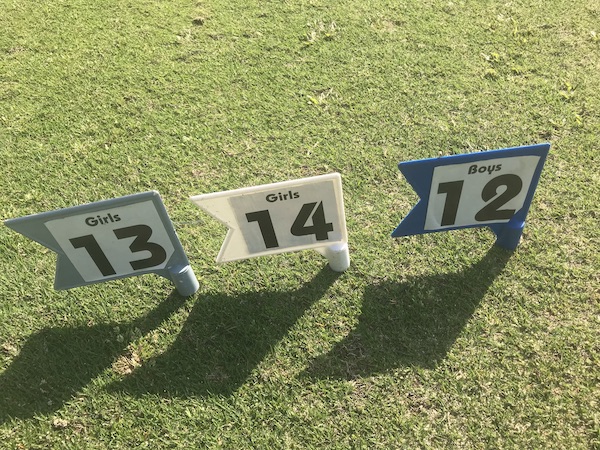Introduction
The only way for Kenya to become a golf giant in Africa and the world at large is to develop a robust junior golf movement and run junior golf competitions to international standards. Among other things, it means exposing these juniors to junior golf competitions from an early age. With this regard, there needs to be some uniformity in how these competition are run from club to club. This article strives to give a blueprint that can be used to create this uniformity across the country.
Junior Tees
Junior Golf Foundation (JGF) is the body that is tasked to promote and develop junior golf in Kenya. In the last year or so, JGF published a junior tees guideline to help the clubs setup their courses with junior players in mind. This would be the very first step in setting consistent standards across the country. If every club implements the junior tee program, we will have the children progressively growing in the game as they get older.
The guidelines provided by JGF can be used as the tees for competition. However, if the clubs have enough personnel, they can create more temporary tees for each gender and age bracket. The goal is to really give this children a true feel of what competitors are like from an early age while making them fun and enjoyable.
Emphasis on Gross Scores
The second phase of this progress in making sure competitions are run with international standards. For starters most juniors below the age of 13 are usually not handicapped. Their competitions are done on gross scores. Gross scores are the true measure of progress. Every competition needs to be run on gross score basis.
Gender Based Age Groups
To ensure the children are competing equitably, the international tradition is to get juniors to compete against other kids of the same age. Each bracket is further classified by gender to ensure boys are competing against boys and girls competing agains girls. Each bracket will tee off from an age and gender appropriate yardage that allows them a realistic chance to make par on each hole. So ideally 6 year old girls will compete against other 6 year old girls, 7 year boys will compete against other 7 year boys etc, etc.
However, we don’t have the number of players to support single age brackets. Thats why it might be prudent to make 2 year brackets as follows:
-
-
- 5-6 years
- 7-8 years
- 9-10 years
- 11-12 years
- 13-14 years
- 15 years and above
-
As we grow the game in future, we can truly fall in line and stick to the international standards.
Graduated Number of Holes
In addition to the age and gender brackets, the juniors can play different number of holes for the competition. Competition for ages of 8 and below can be 6 holes, 9-12 play 9 holes and 13 and above play 18 holes. Again, this factors in their energy and concentration level.
Equipment
Another allowance that need to be factored in equipment. We know that JGF is reaching out to many underprivileged children. As such, these children will not necessarily be able to afford a set of clubs. Children should be allowed to share equipment even in competition. Categorizing the children in the groups recommended above will help in that as well.
Sponsored Club Competitions
The sponsored club competitions offer another avenue to ensure the juniors are adequately engaged in the game. Yes, there’s always a need to emphasize on adults in sponsored events. But there are creative ways that clubs can include the juniors in these events.
For starters, handicapped juniors need to be allowed to play like any other member. They should also be recognized as winners and awarded prizes if they beat the field. Non-handicapped juniors can be accommodated as well. In every tournament there is usually a cut off for tee offs. The non-handicapped juniors can be slotted to play after this cut off and only be required to play 9 holes. There should be a special prize category for them as well. This ensures that the juniors are always engaged and not only considered the one time a year the club holds a junior competition.
Collaboration
Last but not least, there needs to be a closer relationship between the clubs and JGF. Through the junior conveners, clubs should easily be able to source help from JGF in running their competitions, marking the courses for juniors as well as other financial and equipment needs clubs might have to promote the game.



Spot on!
Great idea